Monday Morning Update 9/19/16
Top News

Appalachian Regional Healthcare brings the computer systems of its Kentucky and West Virginia hospitals, pharmacies, and clinics back online after nearly three weeks of downtime caused by an attack of unspecified malware. At least one hospital source says the attack involved ransomware, but the hospital declined to confirm citing an ongoing federal investigation.
ARH says its IT department took its systems and network down to stop the spread of the virus, causing downtime it described as causing “some inconvenience for a few weeks.”
Reader Comments

From Follow the Money: “Re: Mayers Memorial Hospital District (CA). Their EHR was down for two weeks at a cost of $100,000.” The forwarded board of directors meeting agenda did not indicate the source of the downtime, but says half of the $100,000 was spent on “equipment to mitigate future issues.” I don’t know which system was down, but an earlier board meeting agenda mentions Paragon. It’s fun to read a small hospital’s simply written meeting information, which includes such interesting thoughts as an upcoming chocolate festival fundraiser, the poor attitudes of the ED doctors, a sticky ED door that unintentionally left the department open to the public, and the development of an IT disaster backup solution that might need to be revisited.
From HTCGLOBAL: “Re: CareTech Solutions. Jim Giordano is no longer president and CEO as of this past Friday. Seven top executives have resigned in the past six months. HTC Global continues to offshore work.” Unverified, but the company’s executive page and Giordano’s LinkedIn profile are unchanged. HTC Global Services, which offers IT and BPO services, bought the company in December 2014.
From Ex-PwC Consultant: “Re: PricewaterhouseCoopers Advisory Services. Has been quietly laying off workers all summer, with rumors of 20-25 percent let go.” Unverified.
HIStalk Announcements and Requests

Nearly half of poll respondents think the most important healthcare issue in the presidential election is healthcare costs. New poll to your right or here: who would you vote for if the presidential election were held today?
I’m excited to offer (below) the first of an ongoing series I’m calling Decisions. I’ve been talking with the folks at Definitive Healthcare about getting fresh updates about hospital software decisions and the company graciously offered to share what they learn with HIStalk readers. They didn’t even ask for anything in return, not even a plug, but it’s only fair to credit them as the source.
Last Week’s Most Interesting News
- HHS awards $87 million in EHR improvement grants to 1,310 safety net health centers.
- Altos announces that it will acquire Anthelio Healthcare Solutions for $275 million.
- McKesson withdraws its participation in the independent InSight user group conference after Meditech and Cerner are invited to present alternatives to McKesson Paragon.
- Russian backers breach the World Anti-Doping Agency’s systems and publish the medical records of Olympic athletes.
- Apple releases iOS 10, which includes C-CDA support via HealthKit.
- In England, NHS awards $13 million each to 12 health IT global exemplars to establish best practices.
- Dartmouth-Hitchcock Medical Center (NH) will lay off 460 employees, blaming its financial losses on billing-related expenses and implementing of new IT systems.
Webinars
September 27 (Tuesday) 1:00 ET. “Put MACRA in your Workflow – CDS and Evolving Payment Models.” Sponsored by Stanson Health. Presenters: Anne Wellington, chief product officer, Stanson Health; Scott Weingarten, MD, MPH, SVP and chief clinical transformation officer, Cedars-Sinai. Reimbursement models are rapidly changing, and as a result, health systems need to influence physicians to align with health system strategy. In this webinar, we will discuss how Stanson’s Clinical Decision Support can run in the background of every patient visit to help physicians execute with MACRA, CJR, et al.
October 13 (Thursday) 2:00 ET. “Glycemic Control During Therapeutic Hypothermia.” Sponsored by Monarch Medical Technologies. Presenter: Tracey Melhuish, RN, MSN, clinical practice specialist, Holy Cross Hospital (FL). Using therapeutic hypothermia (TH) as a method of care can present risks of hyperglycemia, hypoglycemia, and blood glucose variability. Maintaining safe glucose levels during the cooling and rewarming phases of TH reduces the risks of adverse events. Tracey Melhuish, author of “Linking Hypothermia and Hyperglycemia,” will share best practices for optimal glucose control during TH and the success Holy Cross Hospital sees while using a computerized glucose management software.
View previous webinars on our HIStalk webinars YouTube channel.
Acquisitions, Funding, Business, and Stock

Money-losing, for-profit hospital operator Community Health Systems is rumored to be exploring the sale of its business, although the company’s massive debt may limit interest. Shares are down 76 percent since June 2015 even after a 16 percent jump Friday when word of the possible sale leaked out. The company operates 158 hospitals.
Sales
The Healthix HIE (NY) chooses Verato’s identity management technology, which claims to deliver up to 98 percent matching accuracy by comparing known information to that contained in commercially available databases. The VA is another customer. Verato raised $12.5 million in a single funding round in January 2015 under its original name Araxid.
Decisions
- Blue Mountain Hospital District (OR) will change time and attendance software from Healthland to ADP on October 1, 2016.
- Valley Hospital (WA) will switch from Meditech to Cerner in 2017.
- Lakes Regional General Hospital (NH) will move from NextGen to Cerner in December 2016.
- Saint Clare’s Hospital – Denville (NJ) will replace Cerner with Epic in early 2018.
These provider-reported updates are provided by Definitive Healthcare, which offers powerful intelligence on hospitals, physicians, and healthcare providers.
Announcements and Implementations

In England, Cambridge University Hospital NHS Foundation Trust will outsource its IT infrastructure services for an estimated $182 million over seven years. HPE provides those services now via a 10-year agreement signed when the trust chose Epic in 2012. The trust’s growing financial deficit and significant quality problems triggered the resignation of its CEO and finance director in September 2015.
Government and Politics
The National Institutes of Health will require drug and medical device companies to post the results of all NIH-funded clinical studies – not just the favorable ones – to ClinicalTrials.gov starting January 18, 2017.

Oracle will pay $25 million in cash and provide products worth another $75 million to settle lawsuits over its performance in the failed Cover Oregon insurance exchange, for which Oracle was originally paid $240 million. The state had sought $6 billion in damages, but wasn’t willing to take the case to trial since legal fees alone would have run $1.5 million per month and it had already paid lawyers $20 million in the several lawsuits each party filed against the other.
Privacy and Security

Forward Health Group’s security expert Ed Skaife is named Up and Comer Runner-Up in an international security leadership award competition.
Other
The three big drug companies that manufacture insulin have increased average prices more than tenfold in the past 20 years in lockstep, with all three companies expressing indignation that anyone would look at list prices since insures get big discounts. The chart above shows the price of Humalog and Novolog, but you would notice that only with sharp eyesight since the prices remained identical while rapidly increasing over 20 years.
Vince and Elise offer Part 7 of their “Rating the Ratings” series, this time looking at physician practice EHRs.
Sponsor Updates
- Experian Health will exhibit at the RBMA Fall Educational Conference September 25-27 in New Orleans.
- PatientMatters will exhibit at the Minnesota Hospital Association Annual Meeting September 21-23 in Brainerd.
- Qpid Health, Sagacious Consultants, Versus Technology, and Zynx Health will exhibit at Epic’s UGM September 21-23 in Verona, WI.
- Red Hat announces plans for new facility in Boston.
- The SSI Group will exhibit at the AMSURG Connections Café September 28 in Lake Buena Vista, FL.
- Sunquest Information Systems will exhibit at CAP’16 – The Pathologists Meeting September 25-28 in Las Vegas.
- Surescripts will exhibit at AAFP’s Family Medicine Experience September 20-24 in Orlando.
- Audacious Inquiry is sponsoring the SHIEC Annual Conference in Scottsdale, AZ this week.
- Meditech will attend the 2016 InSight Annual Conference September 27-30 in San Antonio, TX.
- TeleTracking sponsors The DAISY Award for Extraordinary Nurses.
- Tierpoint will host Techpalooza September 22 at its facility in Durham, NC.
- Valence Health will exhibit at the ASHHRA annual conference September 24-27 in Grapevine, TX.
- Verscend will host its annual conference September 27-30 in Palm Desert, CA.
- Consulting Magazine includes Huron on its list of 2016 Best Firms to Work For.
- Healthwise is included in Fortune’s “100 Best Workplaces for Women.”
- ZeOmega launches the ZeExchange e-newsletter.
- ZirMed will exhibit at HBMA The Healthcare Revenue Cycle Conference September 21-23 in Atlanta.
Blog Posts
- Getting Serious About Smartphone Security (PatientSafe Solutions)
- Six Focuses for a Happy L&D Unit (PeriGen)
- Navigating the Population Health Storm – Is Big Data the Solution? (Impact Advisors)
- The Trouble with Texting (PMD)
- The Top 10 Takeaways from the Surescripts 2015 National Progress Report (Point-of-Care Partners)
- 20 Facts About Sepsis Your Medical Staff Needs to Know (Uniphy Health)
- A Peek Inside America’s Medicine Cabinet (Surescripts)
- Philly Fights Cancer (VitalWare)
- The best care is built on trust. (Voalte)
- Patient Relationships at Risk as Drug Store Volumes Rise (West Corp.)
- Health IT Drastically Improves Sepsis Care (Wolters Kluwer POC Advisor)
Contacts
Mr. H, Lorre, Jennifer, Dr. Jayne, Lt. Dan.
More news: HIStalk Practice, HIStalk Connect.
Get HIStalk updates. Send news or rumors.
Contact us.

























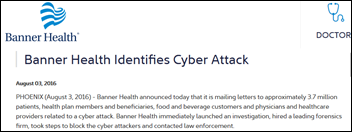



























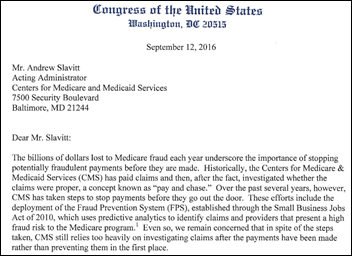
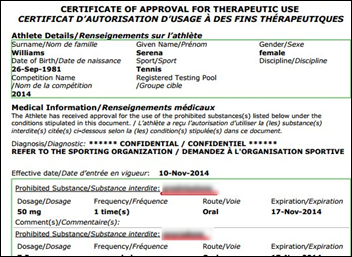
















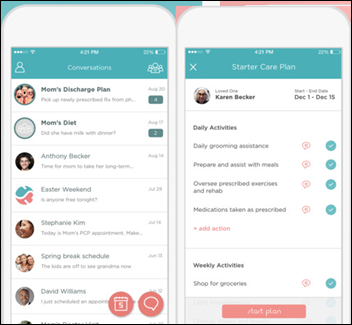




























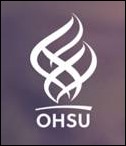

The sentence was "most people just go to Epic UGM" - that's people going to Epic's annual user conference and…